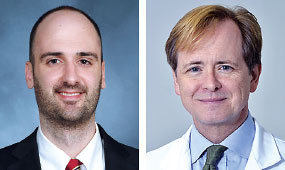Guidance on Treating Patients With Borderline Personality Disorder and Substance Use Disorders

Jonathan Avery, M.D., is director of addiction psychiatry, assistant professor of clinical psychiatry, and assistant dean of student affairs at Weill Cornell Medicine and New York Presbyterian Hospital. John Barnhill, M.D., is the DeWitt Wallace Senior Scholar, professor of clinical psychiatry, and vice chair for consultation-liaison psychiatry at Weill Cornell Medicine and New York Presbyterian Hospital. They are the co-editors of Co-occurring Mental Illness and Substance Use Disorders: A Guide to Diagnosis and Treatment from APA Publishing. APA members can purchase the book at a discount.
The identification and treatment of co-occurring borderline personality disorder (BPD) and substance use disorders (SUDs) can be challenging. The treatment of SUDs requires a strong alliance between the psychiatrist and patient, and the alliance will likely be undercut if the psychiatrist does not understand and take into consideration the patient’s personality style. Moreover, people with co-occurring BPD and SUDs often fare poorly in treatment, but there is evidence for the efficacy of simultaneous treatment.
One reason that treatment of these patients is challenging is that an individual who uses one substance of abuse can appear wildly different when seen during withdrawal, acute intoxication, and persistent abuse. That same patient looks quite different while using a different substance or while using multiple substances. And that same patient thinks, feels, and behaves differently after an extended period of sobriety. Since personality is defined as an enduring pattern of cognition, emotion, motivation, and behavior—and all of these are affected by substances—it can seem difficult to assess and potentially treat personality disorder patients with SUDs.
To diagnose a personality disorder in a patient who is misusing substances, it is often helpful for psychiatrists to try to clarify personality disorders that might have existed prior to the onset of the substance use. This is complicated by the fact that substance use often starts during adolescence, when personality is still in formation, and by the reality that such data are retrospective and liable to error, even if collateral information is available.
Once BPD and a co-occurring SUD have been diagnosed, there are several treatment options. Psychotherapy is generally considered the first-line treatment for patients with BPD, with or without a co-occurring SUD. Dialectical behavior therapy (DBT) has the most evidence for efficacy. This therapy involves individual and group modalities that combine standard cognitive-behavioral approaches with mindfulness, distress tolerance, and acceptance. Both regularly practiced DBT and modified DBT treatments that also explicitly address substance use have been shown to be helpful. DBT groups are now a component of most substance use treatment facilities.
Other psychotherapies for BPD, including psychodynamic psychotherapy, cognitive-behavioral therapy (CBT), and schema therapy have been studied using evidence-based manuals. For people with co-occurring BPD and SUD, two of the best-studied therapies are dynamic deconstructive psychotherapy (DDP) and dual-focused schema therapy (DFST). DDP is a modified, manualized weekly psychodynamic psychotherapy. It has been shown, like DBT, to decrease suicidal behavior and other core symptoms of BPD, as well as substance use.
DFST works on maladaptive schemas, such as negative beliefs about oneself, coping skills, and relapse prevention.
There are limited data on the effectiveness of 12-step groups or other peer-led interventions for individuals with BPD and SUDs.
There is concern, at times, that an individual with BPD may disrupt the 12-step group. At the same time, such groups may help individuals with BPD find a crucial sense of community and meaning.
Patients with BPD often end up taking many medications targeted at their different symptoms. There are limited data, however, indicating that these pharmacologic interventions can help with the emptiness, identity disturbance, and abandonment that form the core symptoms of BPD. Affective or impulsive symptoms may improve with second-generation antipsychotics, mood stabilizers, and dietary supplementation with omega-3 fatty acids, but these gains tend to be modest. Among these medications, topiramate is increasingly being used in the treatment of individuals with BPD and SUDs, as it has been shown to help in the treatment of both conditions. Benzodiazepines, while frequently prescribed for BPD, can lead to misuse and may actually be disinhibiting rather than calming. Evidence-based medications for SUDs, such as buprenorphine, methadone, and naltrexone for opioid use disorder and naltrexone, acamprosate, and disulfiram for alcohol use disorder, should be used as well.
Our strongest central recommendation for patients with BPD and SUDs and for all patients with co-occurring disorders is simple: people should be tactfully but persistently evaluated for a broad range of co-occurring disorders, and then each of these disorders should be given clinical attention. At times, treatment for a particular disorder can be deferred, but, for most co-occurring disorders, therapeutic success is much more likely when treatment is integrated, based on evidence, and focused on all relevant diagnoses. ■



